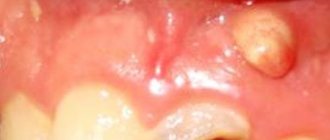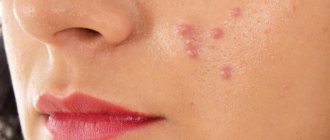Vaginal candidiasis during pregnancy is diagnosed in 9 out of 10 women. The disease develops against the background of hormonal changes and a decrease in the body's protective functions. The causative agent of the infectious disease is a fungus of the genus Candida (Candida). This microorganism is a conditionally pathogenic microorganism that lives on the skin and mucous membranes of almost any healthy person. The activity and vital functions of candida are controlled by the immune system, however, with the slightest disruption, the balance of the intravaginal microflora is disrupted, which leads to the activation of the infectious pathogen.
Candidiasis in pregnant women is mainly diagnosed at the end of the second and beginning of the third trimester. It is important to identify thrush in time and try to treat it before birth. This will help avoid complications not only in the expectant mother, but also in the child, whose risk of infection is very high when passing through the affected birth canal. Treatment of a fungal disease should be carried out under the strict supervision of a gynecologist, who selects medications, taking into account the patient’s position and the individual characteristics of her body.
Thrush during pregnancy
Candidiasis in women during pregnancy is diagnosed very often. This disease is caused by the yeast fungus Candida, which lives in the body of almost every healthy person. Thrush is not an independent disease, and its progression is associated with a weakening of the immune system, which, under the influence of negative exogenous and endogenous factors, is no longer able to perform its functions and restrain the active growth and activity of opportunistic microorganisms.
At the first symptoms of a fungal disease, you should consult your gynecologist and begin treatment as soon as possible. If there is no therapy, candidiasis becomes chronic, relapsing, from which it is quite difficult and sometimes impossible to cure. In addition, it is important to remember that in the absence of treatment, the risk of infection of the child during intrauterine development or as it passes through the birth canal increases.
Thrush is usually diagnosed in women in the last trimester. The risk of developing the disease at the beginning of pregnancy increases in women who have had candidiasis at least once before conception. Therefore, in order to prevent the progression of thrush during such an important and crucial period, at the time of planning a child, it is advisable to undergo a comprehensive examination and, if necessary, undergo treatment for both partners.
Factors for the appearance of thrush
Immediately after conception, colossal changes begin to occur in the female body, affecting the functioning of internal organs and systems. Hormonal levels change, increased production of progesterone inhibits the activity of the immune system, which ceases to fully perform its functions, one of which is control of the activity of opportunistic microflora. In addition, hormonal changes disrupt the balance of intravaginal microflora, making a woman more susceptible to infection.
In addition to these specific features, candidiasis during pregnancy can be provoked by the following negative internal and external factors:
- Dysbacteriosis of the digestive organs, in which pathogenic intestinal microorganisms penetrate the vagina.
- Infection from a sick partner during sexual intercourse.
- Abuse of foods rich in carbohydrates, which are an ideal environment for fungal growth. A pregnant woman should exclude sugar, baked goods, sweets, pastries, and carbonated drinks from the menu.
- Uncontrolled use of hormonal drugs, antibiotics, immunosuppressants. These medications negatively affect the balance of the body's microflora, promoting the active reproduction of pathogenic microorganisms.
- Chronic endocrine disorders, such as diabetes, thyroid disease, metabolic disorders. Before conception, it is advisable to undergo a comprehensive diagnosis in order to identify pathology in time and normalize the functioning of the affected systems.
- Regular wearing of low-quality underwear made from synthetic fabrics. Synthetic underwear does not allow air to pass through, as a result of which bacteria begin to actively multiply on the mucous membrane of the genital organs, which is an ideal breeding ground for fungal infections. It is recommended to choose comfortable, comfortably fitting models, made from natural fabric that does not disturb natural air exchange.
- Avitaminosis. A deficiency of vital vitamins and elements contributes to a decrease in protective functions, so a pregnant woman becomes more susceptible to various gynecological infections.
- Stress, nervous overload, irregular daily routine. Stress factors reduce the protective functions of a pregnant woman, who becomes susceptible to infectious diseases. Therefore, it is important to learn to control your emotional background, try not to take everything to heart, establish a daily routine, rest more, walk outside, and receive only positive emotions.
- Hypothermia. In a woman in a position, the immune defense is already unstable and weakened, and if the body is subjected to stress such as hypothermia, additional problems can occur in the form of candidiasis.
Prevention of thrush in newborns
To prevent thrush from returning, as well as for preventive purposes, you should follow simple rules:
- boil bottles, nipples and pacifiers if the child eats formula after each feeding;
- cleanse your baby’s skin daily using hygiene procedures;
- wash your hands before playing or interacting with the child, before feeding;
- pay enough attention to mother’s breast hygiene if the newborn receives mother’s milk as food;
- after feeding, clean the mouth with water or special products sold in pharmacies or children's stores (foam, solutions, etc.);
- strengthen the child’s immunity (long-term breastfeeding, hardening procedures, daily walks, massage, etc.);
- Toys should be washed at least once a week;
- monitor the condition of the baby’s intestines.
Thrush is an unpleasant phenomenon, but it is quite treatable, provided that therapy is started on time and carried out after consulting a doctor. Complications after suffering from candidiasis almost never occur, so preventive measures and close attention to the hygiene and well-being of the baby are quite enough to avoid relapses and re-infection.
To learn how thrush manifests itself in infants and how to get rid of it, watch the video:
This article has been verified by a current qualified physician, Victoria Druzhikina, and can be considered a reliable source of information for site users.
Bibliography
1. https://www.antibiotic.ru/cmac/pdf/6_2_168.pdf
Rate how useful this article was
5 Voted by 1 person, average rating 5
Did you like the article? Save it to your wall so you don’t lose it!
The main symptoms of candidiasis in pregnant women
The characteristic signs of thrush during pregnancy begin to worry already at the initial stages of the development of the pathology. Women experiencing a fungal infection experience the following pathological symptoms:
- hyperemia, inflammation and swelling of the external genitalia;
- whitish, cheesy vaginal discharge with an unpleasant, sour odor;
- itching in the genitals, intensifying during movement or sex;
- pain, burning when urinating.
In a chronic course, the symptoms of candidiasis are erased and less pronounced. In any case, if a woman discovers suspicious discharge with a cheesy consistency, but there is no itching or burning, you should still not delay a visit to the gynecologist, because in some cases candidiasis is a consequence of the progression of other diseases that are more dangerous for the unborn child.
Candida vulvovaginitis in the practice of a pediatric gynecologist
Z
A disease caused by fungi of the genus
Candida
is one of the most common lesions of the lower genital tract in girls.
According to the luminaries of domestic pediatric gynecology, fungi of the genus Candida
are found in more than half of the cases of chronic recurrent vulvovaginitis in girls of preschool age and in 24–25% of adolescents with inflammatory diseases of the genital organs (M.N. Kuznetsova, 1998; Yu.A. Gurkin , 2000).
Risk factors for candidiasis
Analysis of incidence by age showed that the maximum proportion of vulvovaginal candida occurs in the neonatal period, at the ages of 3, 7 years and adolescence
.
The first rise is explained by the possibility of vertical intrauterine transmission of infection from the mother, the frequent use of antibiotics in the treatment of newborns without covering them with antimycotic drugs, and the increased risk of infection by nosocomial Candida strains.
The second rise is due to a decrease in parents’ attention to the toilet of the external genitalia in children, as well as the most pronounced allergization of children 2–3 years old. The third rise is associated with insufficient hygienic skills of girls, an increase in the number of colds and enterobiasis at the age of 7 years [Shushunova, V.G. Balasanyan, 2001]. It should be noted, however, that compared with other age periods, vulvovaginal candida in girls before menarche is extremely rare. In the pubertal period of life, a slight increase in the frequency of genital candidiasis is usually due to inadequacy of hormonal ratios during the menstrual cycle. A deficiency of estrogen saturation in the vaginal epithelium leads to insufficient development of lactobacilli, which are the main competitor of fungi in the vaginal biotope. A sharp increase in incidence is observed in women who begin sexual relations.
The increased risk of candida infections in children may be associated with a decrease in the body's resistance against the background of hypovitaminosis, imbalance of vaginal microflora, and immunodeficiency. Among the diseases accompanied by immunosuppression of varying severity in children, a special place is occupied by acute and recurrent diseases of the oropharynx, systemic infectious diseases, endocrine pathology (hypogonadism, hypothyroidism, diabetes mellitus, adrenal hypofunction), impaired local and general circulation, neutropenia and agranulocytosis, dysbacteriosis intestines, hypovitaminosis and deficiency of microelements, zinc, iron and magnesium. Candida vulvovaginitis in children is often a manifestation of colonization by fungi of the genus Candida
the oral cavity, intestines and surrounding skin, which, in turn, are determined by the characteristics of diet, hygienic living conditions, the stay of girls in hospitals infected with hospital strains of yeast, etc. The occurrence of genital candidiasis is often facilitated by prolonged and often uncontrolled use of antibiotics and corticosteroid drugs and cytostatics. As is known, taking most antibiotics without covering them with antifungal drugs leads to a decrease in colonization resistance of the vagina and thereby facilitates the adhesion of fungi to the surface epithelium and their subsequent reproduction. In addition, antibiotics, corticosteroids and cytostatics cause a decrease in the content of secretory immunoglobulin, which provides local and general resistance of the child’s body to infection. Not only oral antibiotics, but also local preparations containing iodine, as well as clindamycin and metronidazole, predispose to candidiasis.
The importance of sexual transmission of fungi is small, although infection from a partner with an acute stage of genital candidiasis is not denied.
A proven risk factor for the development of vaginal candidiasis is the physiological change in hormonal levels in women of young and childbearing age during pregnancy and when taking combined oral contraceptives, especially the first generation with a high estrogen content. The lack of cyclicity in the secretion of sex steroids both during pregnancy and while taking combined oral contraceptives leads to the fact that progesterone inhibits the process of blast transformation of lymphocytes to Candida
, and estrogens suppress neutrophil function. Along with this, fungal cells that have sex hormone receptors respond to changes in the hormonal environment by increasing their adhesive ability.
There is information about the development of vaginal candidiasis in sexually active adolescents who used modern barrier methods of contraception (spermicides and condoms containing nonoxynol-9) and practicing oral sex (Nyirjesy P. et al., 1995).
Pathogen
Fungi of the genus Candida
belong to opportunistic aerobic microorganisms that lack the sexual stage of the life cycle and grow predominantly in the yeast phase, i.e.
reproducing by budding. Thanks to this property , Candida
got their name - yeast fungi.
The use of the term “yeast-like” from a modern point of view does not correspond to the true biology of the development of fungi of the genus Candida
.
The fungal cells, surrounded by a distinct multilayered wall, may have a round, ellipsoidal, oval or cylindrical shape in the yeast stage of development and a hypha-like shape in the mycelial or tissue stage of Candida
. Yeast fungi do not form true mycelium, but due to the contact of elongated cells, pseudomycelium and mitospores (asexual spores) of the fungal community are formed.
In the slightly acidic environment of the vagina at normal human body temperature, fungi of the genus Candida
receive the most favorable conditions for growth and reproduction.
In the mycelial phase, Candida
attaches to the vaginal epithelium. Pseudomycelium has the ability to penetrate deep into up to 4–6 layers of the epithelium, which allows the fungi to resist the natural defense factors of the macroorganism and survive against the background of nonspecific sanitation of the vagina. An increase in body temperature to 40–42°C slows down the growth, but not the death, of fungal cells. Stopping growth is possible when the fungal culture is heated to 50°C, and complete destruction of the cells is only possible during the boiling process.
Among the 150 known species of Candida
only 20 strains are true pathogens of vaginal candidiasis, and the leaders among pathogens are only 4 species -
Candida albicans
,
Candida tropicalis
,
Candida parapsilosis
and
Candida glabrata
.
Fungi of the genus Candida
are commensals of many warm-blooded animals, as they are part of the permanent microflora of the digestive tract, especially the large intestine.
Candida albicans
,
Candida tropicalis
and
Candida parapsilosis
can be found on the skin of a healthy person around natural openings, in the mouth, and on the skin of the hands.
In 10–30% of healthy women, a “silent” carriage of Candida albicans
and
Candida glabrata
in the vagina is detected.
At the same time, according to a number of foreign authors (Cox RA, 1997; Farrington PE, 1997; Koumantakis EE, 1997; Vexiau-Robert D., 1996), Candida was in second place among the causative agents of vulvovaginitis in children
.
According to A.Yu. Sergeeva et al. (2001), Candida
albicans is isolated in at least 80% of cases of genital candidiasis and is more pathogenic than other types of yeast fungi.
Candida
fungi are isolated in 15–30% of cases of vulvovaginal candidiasis.
Candida glabrata
is the second causative agent of vaginal candidiasis after
Candida albicans
, especially in patients who are not amenable to traditional treatment with imidazole drugs and, as a result, have a chronic, relapsing course of the disease.
Mycologists assign a conditional third place in the etiology of vaginal candidiasis to Candida tropicalis
, less often –
Candida krusei
and
Candida parapsilosis
.
It has been noted that Candida parapsilosis
most often colonizes the skin of the fingers, especially the bed under the free edge of the nails. This property of fungi has created an increased risk of transmission of the pathogen through the hands of medical personnel onto instruments, syringes, droppers and solutions for parenteral nutrition, artificial endoprostheses, etc.
Accelerated spread of vaginal candidiasis caused by yeasts other than Candida albicans
, led to the coining of the term
non-albicans candidiasis
(NAC). Some researchers are inclined to attribute NAC to a complicated fungal infection of the genitals, explaining this interpretation by the frequent association of NAC with a chronic relapsing course of the disease, difficult to cure with traditional antifungal drugs. There are a number of clinical, epidemiological and laboratory characteristics that allow the clinician to diagnose NAC. A similar diagnosis can be assumed in patients with relapses of vulvovaginal candida after repeated use of azole antimycotics, in patients who complain of itching with slight or unnoticeable discharge from the genital tract, in girls with manifestations of bacterial vaginosis, when a concomitant sexually transmitted infection is detected, and also in the absence of pseudomycelium of the fungus on microscopy of a vaginal smear.
Clinical picture
According to the course of the disease in children , candidiasis, acute, chronic, recurrent and persistent (complicated) forms of vulvovaginal candidiasis, as well as secondary candidiasis of the vulva and vagina are distinguished.
against the background of non-fungal lesions of the genital organs (lichen planus, pemphigosis, Behcet's disease, lichen sclerosus, etc.).
Candidiasis is diagnosed only if there is no increase in the number of fungal colonies in 5–6 bacteriological cultures of vaginal discharge, successively carried out at intervals of a week. The acute form lasts no more than 2 months. The recurrent form should be understood as the presence of 4 or more episodes of vivid clinical manifestations of the disease in one year, alternating with latent periods of candidiasis. In the persistent form, the symptoms of the disease persist constantly, subsiding somewhat after sanitization of the vagina or antimycotic treatment.
The main symptoms of the disease in children are severe itching in the perineum and burning sensation when urinating.
. The itching may be constant or worsen when in a warm bed, after a hot bath, after a long walk, or when using synthetic underwear or sanitary pads. In the area of the vulva and labia, itching is usually most intense and is accompanied by scratching. Pain and burning in little girls can cause fear of urination, and in rare cases lead to the development of clinical manifestations of acute urinary retention. Severe constant itching often leads to sleep disturbances and increased irritability of the girl, up to the appearance of pronounced neurotic reactions. In sexually active adolescents, pain and a burning sensation in the vulva and vagina lead to fear of sexual intercourse, which also contributes to the formation of neurotic disorders and pathological attitudes toward sex.
On examination of a patient with acute vulvovaginal candida
There is marked hyperemia and swelling of the external genitalia, vulvar ring and vaginal walls. Light, creamy or cheesy vaginal discharge has a mild sour odor. Less commonly, the discharge acquires a watery consistency with an admixture of curdled crumbs. For children, the pseudomembranous form of the disease, commonly called “thrush,” is more typical. Between the labia minora, in the vestibule and on the walls of the vagina, islands of a thin grayish-whitish coating are detected, which, unlike diphtheria damage to the mucous membranes, is easily removed, revealing bleeding areas of bright hyperemia. Maceration, large red erosive lesions of the skin with whitish exfoliating epidermis along the periphery (candida intertrigo), scratching and swelling sometimes spread to the skin of the perineum in the area of the inguinal folds and inner thighs. The affected area has a purple tint, a varnish shine, confluent erosions are not accompanied by abundant weeping, are clearly delineated from the surrounding unaffected tissue, small blisters, pustules or erythematous-squamous elements can be found along the periphery of the lesions.
Chronic stages of candidiasis
are characterized by a lower prevalence of lesions, less intense hyperemia and swelling, and few plaque films. In menstruating, untreated girls, the symptoms of vulvovaginal candida resume before the next menstruation and subside somewhat on menstrual days. Chronic forms are characterized by the presence of infiltration and cracks in the clitoris, labia, perineum, and perianal area. Shininess and lichenification (rough folds) of the skin of the labia and around the vaginal opening appear. Changes in the external genitalia may resemble kraurosis, as the skin and mucous membranes become brown in color, become flabby and atrophic, the labia majora and minora are smoothed and wrinkled, and the vestibule of the vagina narrows. With the erythematous (atrophic) type of chronic genital candidiasis, vaginal discharge and plaque are absent, and spots of thin, hyperemic or slightly cyanotic epithelium are detected on the mucous membrane of the vestibule and vaginal walls. Along with damage to the genital organs, candida stomatitis, intestinal candidiasis, and candida tonsillitis can be detected.
Laboratory diagnostics
Laboratory diagnosis of vulvovaginal candida requires direct microscopy of fresh material
, taken mainly from the anterior wall of the vagina.
For microscopy, both unstained native preparations prepared in a drop of saline and smears stained with Gram, Romanowsky or methylene blue are used. Pay attention to the presence of pseudomycelium and yeast cells, the number of leukocytes, and the composition of associates. It should, however, be remembered that the detection of vegetative forms (budding cells and pseudomycelium) allows one to determine the number of fungi, but does not provide information about the pathogenic properties and activity of the infectious process. On the other hand, the absence of pseudomycelium is not always a criterion for excluding candidiasis, since the latter could be caused by other species of Candida
. Positive microscopy results correspond to an excess of fungal colony-forming units (CFU) content of more than 103 in 1 ml of material. The absence of clinical manifestations when more than 104 CFU/ml of fungi is isolated should be regarded as asymptomatic candidiasis. In the presence of a clinical picture, supported by a positive smear microscopy, candida lesions of the genitals are beyond doubt. The cultural diagnostic method (like the PCR method) is not a highly specific and standard method for diagnosing vulvovaginal candida. However, only with the help of these methods is it possible to identify the genus and species of fungi and adequate subsequent selection of systemic antimycotic therapeutic effects.
Treatment
For the treatment of children with vulvovaginal candida, the principle of mandatory elimination (eradication) of the pathogen is applied. It should be remembered that first of all it is necessary to create conditions that are detrimental to the life of cells of the fungus of the genus Candida
, and only then eliminate disorders of the vaginal microcenosis and deal with the correction of background conditions and diseases.
Moreover, given the easy colonization of Candida
, it is important to understand that complete destruction of fungal cells
in vivo
is not possible. The expected result of treatment is the removal of the pathogen in order to eliminate the main clinical manifestations, or to block the proliferation of fungi for the duration of one of the factors predisposing to the development of candida lesions of the mucous membranes (prevention).
To prevent colonization of the mucous membranes of the oral cavity, intestines and vagina, so-called local forms are used. Oral polyene antibiotics (nystatin, amphotericin B, natamycin, levorin) are usually used. These drugs do not have a systemic effect, but only sanitize the intestinal tube, since their absorption in the intestine is minimal. Candida fungi
a good effect is achieved by oral administration of imidazole drugs (clotrimazole, ketoconazole, miconazole).
It is interesting to note that the use of eubiotics to correct intestinal dysbiosis in vaginal candidiasis has not received explicit scientific confirmation, although it is still actively recommended by pediatricians and pediatric gynecologists. Preventive sanitation of the vagina is possible with the help of vaginal tablets, suppositories, gels, solutions and ointments containing any antifungal substances. However, it should be taken into account that in patients with long-acting and pronounced predisposing factors for candidiasis, polyene antibiotics and local forms are little effective. The best means of prevention for such patients are antifungal drugs of the triazole series, in particular, itraconazole and fluconazole
(
Mikosist
, etc.).
The mechanism of action of Mikosist is due to inhibition of the synthesis of ergosterol, which is part of the cell membrane of fungi. The drug has a highly specific effect on fungal enzymes dependent on cytochrome P450. Treatment with Mikosist can be started until results of culture and other laboratory tests are available.
, further dose adjustment is necessary. Mikosist in children and adolescents is prescribed in a dose not exceeding the daily dose for adults.
The results of numerous studies indicate high effectiveness (up to 99%) of a single dose of fluconazole in patients with intact immunity.
Most cases of acute and severe fungal vulvovaginitis in children and adolescents can be treated with local antimycotic agents and antiseptics. The advantages of locally applied drugs are systemic safety, high concentrations of drugs in the affected area, rapid disappearance of painful symptoms of the disease, and a lower likelihood of developing Candida
. Local preparations are more diverse in composition than systemic antimycotics, since many of them are suitable only for local use due to systemic toxicity. According to the source of production, all antifungal drugs are divided into waste products of microorganisms and synthesized chemicals.
For local treatment of vulvovaginal candida
in girls, you can use suppositories with polyene antibiotics (nystatin, levorin, natamycin) and azole drugs (clotrimazole, etc.), which a pediatric gynecologist or a nurse trained by him injects daily into the vagina.
Before the first introduction of suppositories or vaginal tablets, it is advisable to irrigate the vagina through a catheter with a solution of baking soda and boric acid, antiseptics with a fungistatic effect (octenisept solution, 2% sodium tetraborate solution, miramistin solution, aqueous solutions of aniline dyes). Long-term use of local antiseptics most often turns out to be ineffective, since the effect of use ends soon after their discontinuation.
The duration of treatment should be 6 days for natamycin and clotrimazole and at least 10 days for nystatin, levorin and miconazole, which is not always appropriate for outpatient management of young girls. Therefore, nowadays, suppositories with econazole are increasingly used for local treatment of vulvovaginal candida in children, which are inserted deep into the vagina, 1 suppository per night for 3 days. Gyno-travogen and gyno-trozid, despite their prolonged (up to 1 week) effect after a single administration of 1 suppository, turned out to be less popular among pediatric gynecologists, which may be due to wariness in relation to the allergic reactions noted in the annotation and the high cost of the drugs. The use of ketoconazole (Nizoral) in children is limited due to its severe side effects. In patients with vulvovaginitis and severe damage to the skin of the external genitalia, antibiotics and antimycotics can be injected not only deep into the vagina, but also applied in the form of gels and ointments to the vulva, the area of the external urethral opening and the perineum.
In the presence of an association of pathogenic fungi of the genus Candida
with other urogenital infections, it is advisable to use
combination drugs
that simultaneously contain an antimycotic and other antimicrobial agents. In the practice of a pediatric gynecologist, it makes sense to more widely use Macmiror-complex (nitrofurantel and nystatin), Terzhinan (ternidazole with neomycin, nystatin and prednisolone), Polygynax (neomycin, nystatin and polymyxin), Klion-D (metronidazole) to eliminate mixed infections of the lower genital tract and miconazole nitrate). The use of combined local drugs in some cases allows one to avoid the prescription of oral antibiotics, which worsen vaginal candidiasis.
It is important to note that most topical azole derivatives are not recommended for use in young women wishing to continue pregnancy. If necessary, their use is permitted in the first trimester of the gestational process. In addition, it should be remembered that the administration of imidazole derivatives together with polyene antibiotics causes a mutual weakening of the effects.
In girls with chronic, recurrent, complicated or persistent superficial candidiasis, including vulvovaginal candida, the combined use of systemic and local forms of antimycotics
one line, or parallel use of local antiseptics and fungistatics with systemic antifungal drugs. The advantage of the latter is the ease of administration, minimizing the duration of treatment, as well as the possibility of a highly effective effect on the pathogen at any location.
Triazole compounds occupy a special place among systemic antimycotics.
, of which
fluconazole
(
Mikosist
, etc.) is the most common in Russia.
Fluconazole is considered the drug of choice due to its high selective activity against Candida albicans
, pharmacokinetics and ease of use.
Since triazole compounds are well absorbed, preference should be given to oral administration of the drug. Parenteral administration is acceptable if it is impossible to take the medicine by mouth. For uncomplicated vulvovaginitis of candida etiology, it is enough to use the drug once, and in patients with a torpid or severe course of the disease, the duration of treatment depends on the species of the fungus in the Candida
and on the depth of the lesion. The pediatric dose of the drug for candidiasis of the skin and vagina is 2 mg/kg of the child’s body weight, while in children over 12 years of age a standard daily dose of 50 or 150 mg of fluconazole should be used. The general recommendation for the treatment of complicated forms of genital candidiasis is to increase the duration of taking the drug in standard doses to 10–14 days.
It should be remembered that the most common reason for treatment failure is
Vulvovaginal candida is failure to follow doctor’s recommendations and unsystematic self-medication with local antiseptics and antimycotics prior to visiting a doctor.
The situation was complicated by the penetration of low-quality generics and sometimes even counterfeit drugs into the Russian pharmacopoeial market. Along with this, a frequent mistake in the medical management of sick children is ignoring the bacteriological examination of the culture of the vaginal contents in order to identify the species of the pathogen and determine its sensitivity to the main antimycotic drugs. The fight against relapses of vulvovaginitis of fungal etiology should include mandatory correction of background and predisposing conditions
. In this regard, it is of interest to use the immunomodulator Gepon, which has interferon-inducing activity and the ability to quickly eliminate the most characteristic clinical manifestations of vulvovaginal candida (itching, pain, redness of the inflamed tissue significantly decreased by the 2nd day of use of the drug). Presumably Gepon inhibits the production of proteinases by fungal cells, which are one of the leading components of inflammation. According to Perlamutrov Yu.N. and his colleagues (2001), Tishchenko A.L. et al (2001), three-time irrigation of 5 ml of 0.04% Gepon solution (single dose of 2 mg) of the mucous membranes of the vagina and perineal skin with an interval of 2-3 days not only had a pronounced clinical anti-inflammatory effect, but also made it possible to achieve clinical and etiological cure in 84% of patients with genital candidiasis.
The effectiveness of treatment for vulvovaginal candida is determined every 10 days of treatment, as well as 40 days and 3–4 months after the end of antimycotic etiotropic treatment, taking into account clinical and laboratory characteristics of the quantitative and species composition of the vaginal biotope and the severity of its colonization by fungi of the genus Candida
.
Diagnosis of candidiasis during pregnancy
After collecting anamnesis and visual examination, the gynecologist will give a referral for a diagnostic examination, which will help identify the pathogen and select the most effective treatment regimen.
To clarify the diagnosis, a referral is given for the following laboratory tests:
- Microflora smear. A smear is taken from the inner walls of the vagina, which is then examined under a microscope. With vaginal candidiasis, fungi and other pathogens are present in large quantities in the vaginal contents.
- Bacterial culture. Allows you to determine which fungi inhabit the vagina, as well as select effective drugs for therapy.
If the diagnosis of vaginal candidiasis is confirmed, the doctor immediately draws up a treatment plan. Treatment of candidiasis during pregnancy involves the use of antifungal drugs approved during pregnancy. Depending on the stage at which the disease is diagnosed, the doctor may prescribe both local and systemic antimycotics. To remove pathological symptoms. Additionally, local anti-inflammatory and antiseptic agents are prescribed. To maintain immunity, the doctor may recommend taking a course of immunomodulating and restorative drugs, probiotics with bifidobacteria.
If thrush occurs against the background of other internal diseases, additional consultations are prescribed with specialists such as:
- endocrinologist;
- gastroenterologist;
- immunologist;
- nephrologist, etc.
In addition to taking medications, a pregnant woman should follow a gentle diet, minimizing the consumption of foods rich in carbohydrates. Treatment in the initial stages helps to quickly get rid of the infection and unpleasant symptoms, and avoid dangerous complications.
Normal vaginal flora
The female reproductive system suffers from dysbiosis no less than the intestines. The normal flora of the vagina, with all its diversity, consists of lactobacilli , which are the main typical representatives of the microflora of the genital tract of healthy women. They provide a protective mechanism by competing with pathogenic microorganisms and maintaining an acidic environment in the vagina, which creates unfavorable conditions for the development of pathogenic microflora. The protective properties of lactobacilli are achieved through the production of so-called endobiotics - substances whose action is similar to antibiotics. and the production of lactic acid, which... normalizes vaginal pH. A decrease in the number or disappearance of lactobacilli in the vagina contributes to the development of infectious diseases.
Normal bacterial flora plays an antagonistic role, preventing the invasion of pathogenic microorganisms, and any invasion of healthy epithelium is almost always accompanied by changes in the vaginal microflora.
The danger of candidiasis in pregnant women
If the treatment of candidiasis in women during pregnancy is correct and timely, neither she nor the unborn child is in any danger in terms of health. It’s another matter when the disease progresses, and the pregnant woman refuses to take the medications prescribed by the doctor for fear of harming the fetus. But it is worth noting that the modern pharmaceutical market sells many antifungal drugs that are allowed to be used already in the early stages of pregnancy. They effectively destroy fungal infection and at the same time do not have any effect on the growth and development of the fetus.
Urogenital candidiasis or thrush
Finally, the problem of urogenital candidiasis or so-called thrush . The causative agent of this disease is fungi of the genus Candida. In America, more than 100 million women and children suffer from thrush. The frequency of vulvovaginal candidiasis in Russia over the past 10 years has almost doubled and amounted to 30-45% in the structure of infectious lesions of the vulva and vagina. (A.L. Tikhomirov, Ch.G. Oleinik, 2001).
Well-known risk factors for fungal infections are taking antibiotics, hormonal drugs, including contraceptives, various chronic diseases, an unbalanced diet with a lot of carbohydrates, long-term stress, in a word, everything that weakens the immune system.
Considering all of the above, the basic principles of treatment for vaginitis should be the following:
- normalization of vaginal pH;
- restoration of normal biocenosis;
- increasing local immunity.
All this can be achieved by prescribing preparations based on lactobacilli for vaginal sanitation, because it is these preparations that provide an acidic environment in the vagina due to the production of acid during the enzymatic breakdown of glycogen contained in the vaginal epithelium; synthesize substances with antimicrobial and lysozyme activity, and the production of hydrogen peroxide by lactobacilli limits the growth of other microbes. Recently, New Scientist magazine informed its readers that a Swedish company plans to produce vaginal tampons and sanitary pads with live lactobacilli.
Due to the importance of the problem under discussion, I would like to draw attention to means for correcting various microbiocenoses of the human body - liquid bacterial concentrates or liquid probiotics . These drugs are a microbial mass of bacteria in a living biologically active form. Prepared on the basis of pure cultures of microorganisms, representatives of normal human microflora. They have a number of advantages over dry probiotics.
Description of the consequences of the disease
It is rare, but it happens that Candida yeast fungi penetrate the placental barrier, contributing to intrauterine infection of the fetus. But basically, a child becomes infected with thrush at the time of birth, when he moves through the birth canal affected by the fungus. Infection during childbirth can cause severe damage to the skin and mucous membranes, and the membranes of internal organs.
Candidiasis is dangerous not only for the unborn child, but also for the pregnant woman herself. Fungi negatively affect the condition of the tissues of the vagina and birth canal, helping to reduce their strength and elasticity. Therefore, immediately at the time of birth, the risk of serious injuries increases, which can cause heavy blood loss and other complications.
In addition, untreated vaginal candidiasis often causes the progression of erosive processes in the uterus. Erosion can subsequently negatively affect women's health and cause infertility.
Benefits of Liquid Probiotics:
Firstly, the bacteria are in a biologically active state and begin to work from the first minutes of contact with the mucous membranes. Secondly, liquid concentrates contain a variety of bacterial waste products. These products include: organic acids (including lactic, acetic, propionic); antibiotics of natural origin, which are lipopolysaccharide-protein complexes, including heat-stable ones (lactocidin, lactolin).
The mechanism of action of these drugs is that due to the creation of an acidic environment and a pronounced antimicrobial effect, the development of pathogenic, putrefactive and gas-forming microflora (salmonella, staphylococcus, proteus, diphtheria bacilli, listeria, yeast-like fungi of the Candida species, etc.) is suppressed.
In addition, the complex forms the immune status of the body . It stimulates the lymphoid apparatus, participates in the creation of a common pool of immunoglobulins, increases the activity of lysozyme, and forms nonspecific protection and immunoresistance. This, in turn, stimulates the expulsion of intracellular parasites from cells, such as mycoplasma, chlamydia, listeria, not to mention the effect on banal microflora.
Back to list Previous article Next article
Cost of treating candidiasis in women
The cost of treating candidiasis in a medical setting is the most conservative and affordable. Before prescribing a treatment plan, our specialists will conduct a thorough examination, study in detail the results of the diagnostic examination, assess the general health of the pregnant woman, and only then select an effective therapeutic regimen, which will allow you to quickly and safely get rid of the infection and prevent the disease from becoming chronic.
You can find out how much it costs to treat vaginal candidiasis at the Healthy Family medical clinic by calling +7 (495) 185 93 07 or ordering a call back. Our administrators will contact you and answer all your questions.
![shutterstock_1111315238 [converted].jpg](https://ryzstom.ru/wp-content/uploads/shutterstock_1111315238-preobrazovannyj-jpg-330x140.jpg)










